Introduction to Italy
The tenth largest country in Europe; Italy reaches into the central Mediterranean and includes the islands Sardinia and Sicily.
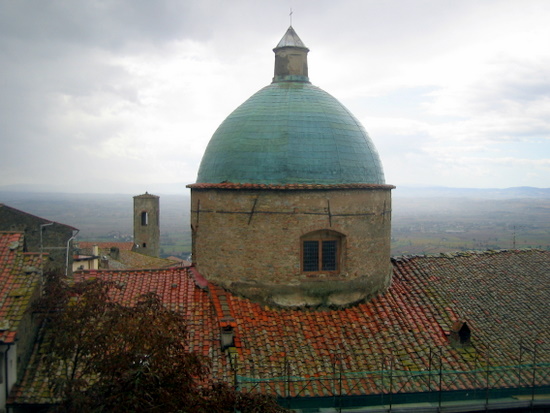 Before Italy became a nation-state in 1861, the country was divided into city-states. Those political divisions may no longer exist but they are still present culturally. One will find a long-standing rivalry between Florence and Siena, for instance, as well as a general mistrust between northerners and southerners. The traveler benefits enormously from this natural competitive spirit, for every city and/or region offers a distinct specialty of which they are extremely proud. What unifies this rich and diverse country is the Italians’ love of food, family, and beauty.
Before Italy became a nation-state in 1861, the country was divided into city-states. Those political divisions may no longer exist but they are still present culturally. One will find a long-standing rivalry between Florence and Siena, for instance, as well as a general mistrust between northerners and southerners. The traveler benefits enormously from this natural competitive spirit, for every city and/or region offers a distinct specialty of which they are extremely proud. What unifies this rich and diverse country is the Italians’ love of food, family, and beauty.
Passports & Visas
Passports are required when entering or leaving the European Union. Visas are not required for US citizens for visits of less than 90 days. For longer visits, contact the nearest Italian embassy.
Obtaining a US passport
The US Government Website is where to start.
Visa information
Embassy of Italy
For local consulates, look under Consulate Network on the Website.
American Offices
Provides consular assistance to U.S. citizens
United States Embassy
via Vittorio Veneto, 119/A
00187 Roma, Italy
Tel: (+39) 06 4674 1
Italy Tourist Information
Culture and History
The first peoples of Italy were the Etruscans, who settled here as early as 8th century B.C. The Greeks also had colonies in the south, close to Sicily. The Romans, in their thirst for conquest, soon took control of the peninsula by 6th century B.C. until the Empire fell in the 3rd century B.C. For centuries after, the region was composed of rivaling city-states without any unifying government. Some city-states grew more powerful than others due to their rising merchant class, such as in Venice and Genoa. In the 13th century, Florence experienced a blossoming of the arts—in literature, painting, and sculpture—which soon spread across the region and 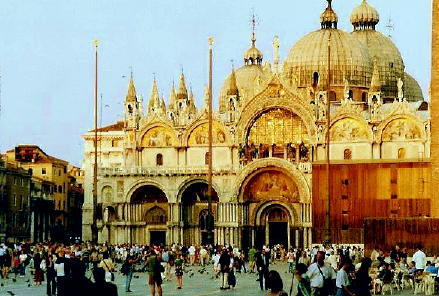 throughout Europe. This vital artistic period, the Renaissance, produced such artists and writers as Dante, Michelangelo, and Leonardo da Vinci. It would pull the peninsula and Europe out of the Dark Ages, with its focus on culture, civilization, and knowledge.
throughout Europe. This vital artistic period, the Renaissance, produced such artists and writers as Dante, Michelangelo, and Leonardo da Vinci. It would pull the peninsula and Europe out of the Dark Ages, with its focus on culture, civilization, and knowledge.
The Italian peninsula remained without a central, unifying power. Spain, France, and Austria vied for (and sometimes succeeded in taking) control of this now-desirable land. Finally, in the 1840s, nationalist Giuseppe Garibaldi formed a movement to unify the peninsula and, soon after, in 1861, Victor Emmanuele II was installed as the first king of Italy.
In 1922, the fascist Benito Mussolini rose to power and instituted his totalitarian regime. This is naturally a dark, disastrous chapter in Italy’s history. During World War II, Italy sided with Nazi Germany. The Allies invaded in 1943 and Italy finally surrendered in 1945. A year later, Italy was declared a Democratic Republic. From then on, the economy gained strength. In 1999, Italy joined the European Union.
While Italy enjoys a healthy tourist economy, there are many economic and social problems, such as high unemployment rates, illegal immigration, corrupt government officials, and organized crime.
Currency in Italy
Italy’s currency is the Euro €. The former currency, the lira, has been mostly phased out but some stores will still accept lira. Traveler’s checks are still accepted throughout the country in large shops, hotels, and restaurants, but credit cards and Euros are really the most acceptable way to pay for your purchases. ATMs are now very easy to find. The best exchange rates are often found with the use of credit or debit (ATM) cards. Therefore it is almost always smartest to use these rather than change your currency at a cambio (exchange bureau). Italian banks are generally open from 8am to 1pm and from 2:30 to 3:30. All banks are closed on holidays, which are frequent in Italy (see list below).
Driving in Italy
If you are staying in a major city, there is no need to hire a car. Most cities, such as Florence and Rome have good public transportation – or, you can simply walk! If you have a car, parking is difficult and expensive, and driving amidst the Italians can be, let’s just say, precarious. Italian drivers don’t always follow the rules and to say they drive fast is an understatement. Naples, in particular, is notorious for its rebellious traffic rule: stop at green lights and go at red lights. This is not always true but it is known to happen. Also, you may find someone going the wrong way down a one-way street.
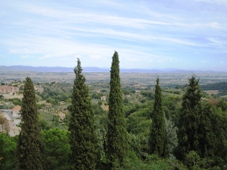 If you are staying in a rural area, it is definitely better to rent a car. But, you had better be sure to observe traffic signs, usually marked with easy-to-understand symbols. Italians drive on the right side of the road, so this is good news for Americans but not for the English. Be especially mindful of those on motorbikes and bicycles, because there are many and it can be sometimes difficult to share the road.
If you are staying in a rural area, it is definitely better to rent a car. But, you had better be sure to observe traffic signs, usually marked with easy-to-understand symbols. Italians drive on the right side of the road, so this is good news for Americans but not for the English. Be especially mindful of those on motorbikes and bicycles, because there are many and it can be sometimes difficult to share the road.
Speed limits are generally: 130 km/hour (80 mph) on toll roads, 110 km/hour (68 mph) on two-lane roads, 90 km/hour (56 mph) on main roads, and 50 km/hour (31 mph) in cities. Speeding fines are given often (on the spot) and there are many radar traps. Also be warned that the blood alcohol limit is 0.5mg of alcohol per milliliter of blood, and tests are frequently administered by police officers. Seat belts are required for both the front seat and the back.
Electricity in Italy
Italy is on a 220-volt system. You can buy converters to bring with you so many of your 120-volt appliances will work in Europe. These typically cost around $30-40 if they are universal converters that work in several European countries. Be sure to check that your appliance is the type that works well with a particular converter.
Most computers work on both 120 and 220 volts. When shopping for other appliances (hair dryer, curling iron, etc,) look to see that they are for use on both voltage systems (many are). Then you just need to turn a lever on your dryer or curling iron to convert it or it might do it automatically. You will still need to bring along the two-prong adapter so it will plug into the France-style outlet. Adapters are very inexpensive (just a few dollars). Remember, the small adapter will not convert the voltage so be sure your appliance is OK for 220 volts before plugging it in, or you’ll see the sparks fly.
Emergency Numbers
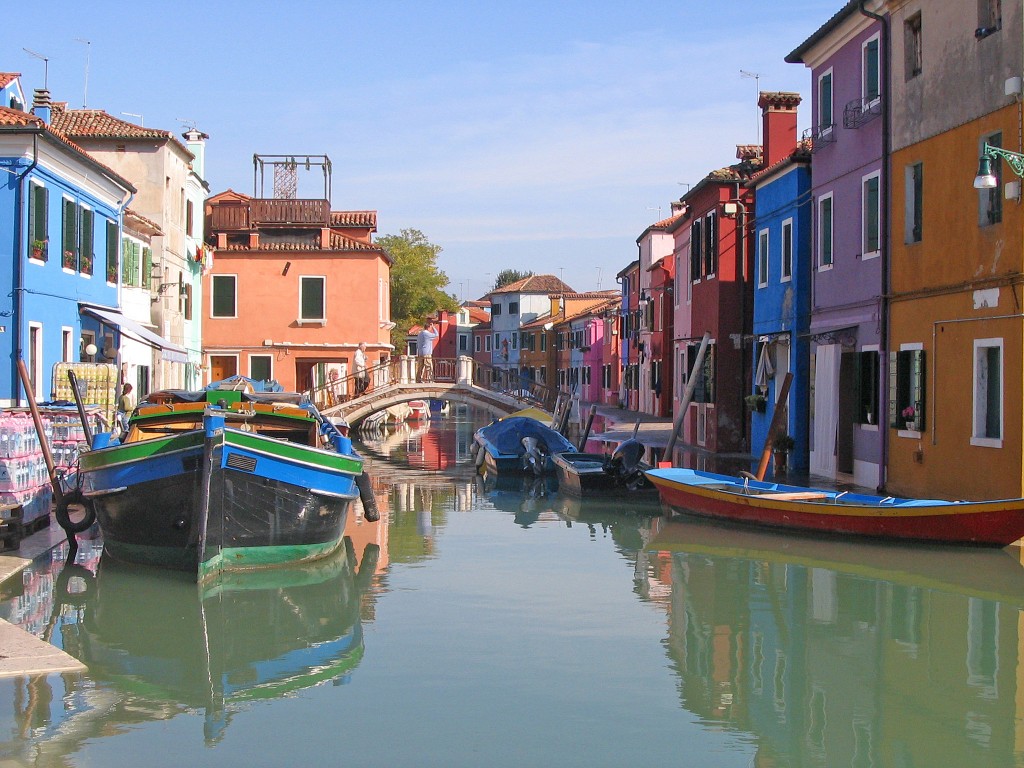 Dial 113 anywhere in the EU for emergency services
Dial 113 anywhere in the EU for emergency services
Etiquette in Italy
The Italians are a warm and generous people, and they love to talk. They greet strangers kindly, and often start conversations with people they don’t know. Remember that you are a guest in their country, so be polite. When introductions are made, they often shake hands. But once they are familiar with people, they greet each other with a kiss on both cheeks. Learn the basic polite words in Italian, and this will be appreciated: buongiorno (good morning), buonasera (good afternoon/evening), grazie (thank you), and ciao (goodbye). When entering shops, be aware that it is not customary in Italy to “just browse.” Italian shopkeepers are getting used to it, so you will sometimes see signs that say ingresso libero, which acknowledges that this is fine. It is also important to know that some churches may require women to wear scarves around bare shoulders.
Public Hours in Italy
Most shops in Italy are open from 9am to 1pm and from 3:30pm to 7:30pm, Tuesday through Saturday, and only 3:30 to 7:30pm on Mondays. Bakeries and bars open earlier, often at 8am. Markets are generally open only in the mornings. Department stores may stay open over lunchtime. Shops are typically closed on Sundays. Note that in late July and for all of August, many shops and restaurants are closed because Italians go on holiday.
Safety
In general, Italy is a safe place to visit. Violent crime is rare. However, in major cities, especially in train stations and churches, pickpocketing is rather common. Use common sense and stay alert. Do not walk alone through poorly lit areas. If you are carrying a bag or camera, sling it across your torso instead of carrying it on a shoulder where it can be easily grabbed. Watch out for pickpockets who sometimes work in teams where one will provide distraction while the other lifts your valuables. Trust your instincts: if something doesn’t seem right, extricate yourself from the situation.
Special Note
Be extremely careful about purchasing counterfeit goods bearing luxury labels from street vendors or elsewhere. The Italian Government Tourist Board advises travelers that hefty fines are being imposed on tourists purchasing counterfeit goods while visiting Italy.
Officials say this is one of the toughest laws in the world and carries fines of up to €10,000 for those caught purchasing the counterfeit products. The minimum fine is €3,333 and ignorance of the law is not accepted as an excuse. Your luggage will be examined when entering and leaving Italy, so don’t take any chances.
Time Zone
Italy is in the Central European Time Zone, which means it is GMT plus one hour. During the summer months (Daylight Savings Time), it is GMT plus two hours.
Tipping in Italy
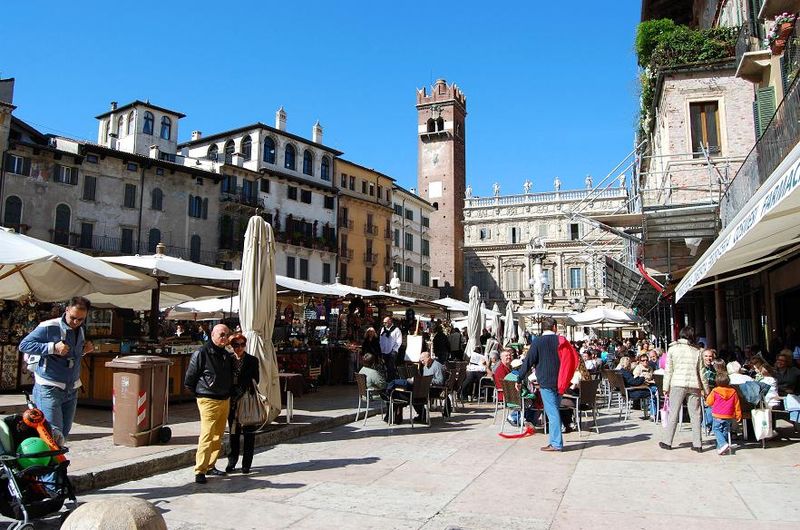 Tipping is not expected in Italy, except in those most American of tourist spots. Service is generally included in your restaurant bill. But it is never wrong to leave a little tip if you really appreciate the service. You can round off the bill or just leave a few coins as a sign of thanks.
Tipping is not expected in Italy, except in those most American of tourist spots. Service is generally included in your restaurant bill. But it is never wrong to leave a little tip if you really appreciate the service. You can round off the bill or just leave a few coins as a sign of thanks.
Toilets in Italy
Restaurants, cafes, and bars are now legally required to allow anyone to use their toilets, whether or not you purchase anything. Toilets can often be found in major department stores, in nicer cafes and at train stations. In some cases, you may find attendants asking for .50 coin.
Weather in Italy
The warm air from the Mediterranean and the blocking of cold air by the northern mountains contribute to Italy’s overall temperate climate—the average temperature in summer is 75ºF/23ºC. Because of Italy’s geographical diversity, however, with mountains to the north and plains in the south, the weather varies depending on where you are. In the north, in the Dolomites and the Alps, the summers are cool and in the winter it can get quite cold: the temperature can drop down to 17ºF/-8ºC. In the central region, the winters are generally foggy and rainy, and the summers are hot and humid. From Rome southward, the winters are mild, rarely reaching below 50ºF/10ºC. During the summers, the scirocco, the warm wind from the Sahara, blows in to the southern region, creating a very hot, but dry climate.
Getting Around in Italy
Air Transportation
A comprehensive guide to Italy’s Airports.
Boats and Ferries
Ferry services are available to shuttle travelers from the mainland to the islands of Sardinia and Sicily. We recommend making advance reservations, particularly during the busy summer months. The ports that offer ferry service are: Genoa, Livorno, Civitavecchia, Fiumicino, Naples and Villa San Giovanni. The major companies operating ferries are: Ferrovie dello Stato, Tirrenia Navigazioni, Grandi Novi Veloci, Moby Lines, and Sardinia Ferries.
Several public boat lines operate on Italy’s major lakes—Lake Maggiore, Lake Como, and Lake Garda. Click the following link for schedules: Gestione Navigazione Laghi Maggiore Garda Como.
Rail
Italy’s railroad, Trenitalia, also known as Ferrovie dello Stato, offers service throughout the country. High-speed trains—the Eurostar—run between major cities. It is the most expensive but quickest option, and you must make a seat reservation. The Intercity and Intercity Plus trains run the length of Italy and offer both first and second class seats. You only need to make a reservation on the Intercity Plus trains. The Direct and Interregional trains are the local trains and are much less expensive and much slower. The interregionali trains are slightly less expensive of the two. In all cases, though you might pay a little extra for first class, this is advised because the second class tends to be very crowded. For all train travel, it is necessary to first validate your ticket, which means stamping it at the small yellow box, usually in front of each platform.
Some major cities have metro (subway) service as well.
Car Rental in Italy
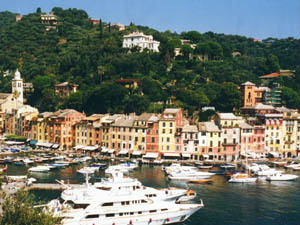 It is usually less expensive to arrange your car rental while you are still in the USA. The airport you fly into will surely have many car rental agencies. You’ll likely find the same rental car agencies we have at home, such as Avis and Hertz, but a popular one in Europe is Europcar. To drive in Italy you must be at least 18 years old. To rent a vehicle, you must be at least 21. If you are from a country that is not in the EU, you will need an International Driver’s License. To get an International Drivers license, contact your local AAA.
It is usually less expensive to arrange your car rental while you are still in the USA. The airport you fly into will surely have many car rental agencies. You’ll likely find the same rental car agencies we have at home, such as Avis and Hertz, but a popular one in Europe is Europcar. To drive in Italy you must be at least 18 years old. To rent a vehicle, you must be at least 21. If you are from a country that is not in the EU, you will need an International Driver’s License. To get an International Drivers license, contact your local AAA.
Taxis
In the larger cities, taxis can be found at airports, railroad and bus stations, and usually in the main hotel or shopping areas. Taxi stands are indicated by a blue sign with white text. They are generally quite expensive and not always reliable (there may be no taxis at the taxi stand), so public transportation is advised over this option. Most have meters that will display a base rate and climb from there. Note that it is not customary to tip the driver.
In smaller towns, it is advisable to ask a hotel or shop clerk for a name and number of a local driver. Also, negotiate a price before the trip begins.
Health
Pharmacists can advise medications for general health issues (such as colds, backaches, allergies, etc.). For non-emergencies, look for a green illuminated cross, which indicates a farmacia. In tourist areas of major cities, most pharmacists speak English. Some pharmacies are open 24 hours. Check the door for hours. Emergency health care in hospitals is available (and free) for all traveling in Italy.
Personal Medications
No permit is required to carry medication in your luggage. However, you should pack your medication in its original containers and/or have your doctor’s prescription with you. Customs officials will have to be satisfied that you are not importing more than would be necessary for your personal use, taking into account the drug type and length of stay (for no more than three months).
Lodging in Italy
Italy offers every type of lodging from couchsurfing, to hostels and agritourism, to 5-Star resorts.
Main Sights in Italy
Rome, is the capital of Italy, and within it the Vatican, seat of Catholic church. Rome is a treasure trove of art and architecture, from the haunting Roman ruins to the glorious fountains and artistic treasures.
Be sure to visit the magical city of Venice. There is nothing more romantic than spending an evening dancing under the stars on St. Marks Square or sharing a moonlight gondola ride on the canals. No cars on the island gives Venice a calmness and beauty that one cannot describe. But Northern Italy has even more to offer than Venice; here you can enjoy the Ligurian Coast, Lake Como, Milan, Verona and more.
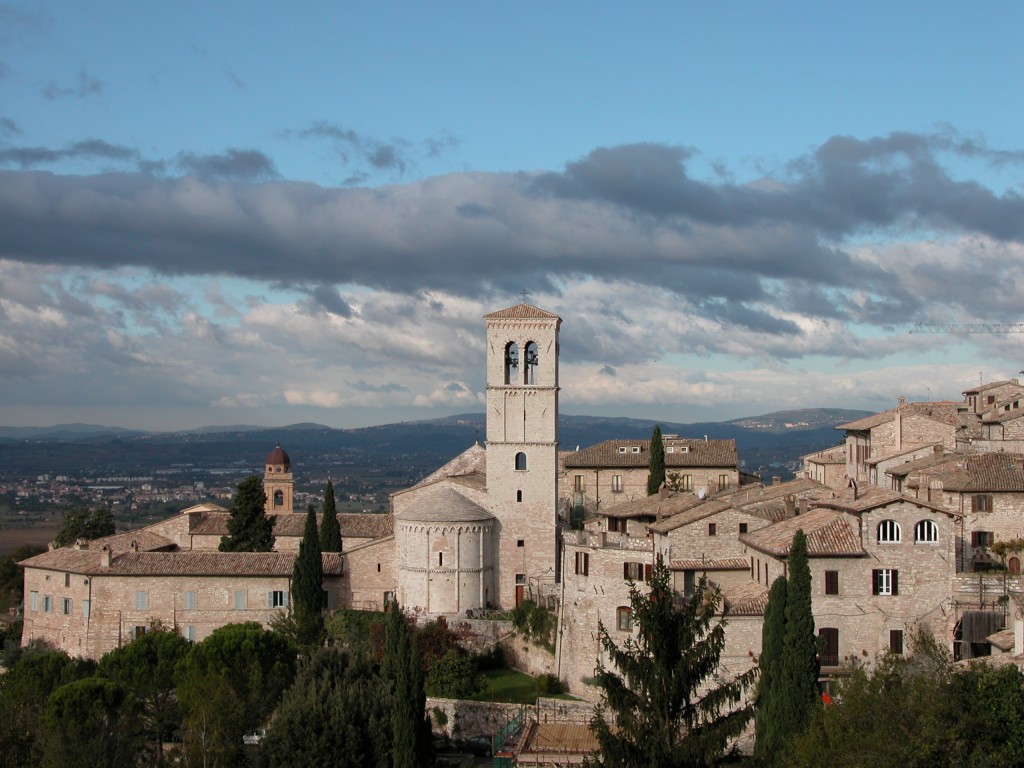 Florence, Siena, and the many towns of Tuscany and Umbria in the center of Italy offer gorgeous scenery and medieval villages.
Florence, Siena, and the many towns of Tuscany and Umbria in the center of Italy offer gorgeous scenery and medieval villages.
Palermo, Naples, and the Amalfi coast hold archeological and scenic treasures that are beyond belief.
The regions of Abruzzo, Arezzo, Pulia and other lesser-known areas are just waiting to be discovered. Many more cities and towns will call to you in this friendly country. You can return over and over and never see the same place twice.
Italy is the place to come for great food, wine, art, shopping, and spectacular natural beauty.
Public Holidays in Italy
January 1 – New Year’s Day (Capodanno)
January 6 – Epiphany (Epifania)
February 11 – The Lateran Pacts (Patti Lateranensi)
March 19 – Saint Joseph’s Day (La Festa di San Giuseppe Movable)
Easter Sunday (Pasqua)
Monday after Easter, Easter Monday (Lunedì dell’Angelo, Pasquetta)
April 25 – Anniversary of Liberation (Festa della Liberazione)
May 1 – Labour Day (Festa dei Lavoratori)
May 9 – Europe Day (Giorno europeo)
June 2 – Republic Day (Festa della Repubblica)
August 15 – Assumption Day (Assunzione) or (Ferragosto)
November 1 – All Saints (Ognissanti) or (Tutti i santi)
November 2 – Day of the Dead (Il giorno dei morti)
November 4 – National Unity and Armed Forces Day (Giorno dell’Unità Nazionale e Festa delle Forze Armate)
December 8 – Immaculate Conception (Immacolata Concezione, or just Immacolata)
December 25 – Christmas Day (Natale)
December 26 – St Stephen’s Day (Santo Stefano)
Telephones in Italy
With the ever increasing use of cell phones, public telephones are getting harder to find. You will still find some public phone booths (Telecom Italia) on the street, and some bars have pay phones as well. Most can be operated with either coins or prepaid calling cards. To use a calling card, tear off the tab where indicated and slide the card in. Both of these options are quite expensive, so your best bet is to buy an international phone card when you arrive in Italy (these can be found at tobacconist shops and newsstands). Not only is this option less expensive, you can use this card in your hotel phone as well as any public phone, as all you have to do is dial a 1-800 number and enter the pin on the back of the card.
Dialing Procedures
To reach a local operator in Italy and for directory information, dial 12.
To reach an international operator, dial 170.
For calls from the USA or abroad to Italy, dial the country code (39), followed by the city code (look here for a list of city codes), followed by the local phone number.
While phoning within Italy, dial the area code, the city code, and then the local phone number.
Useful Country Codes
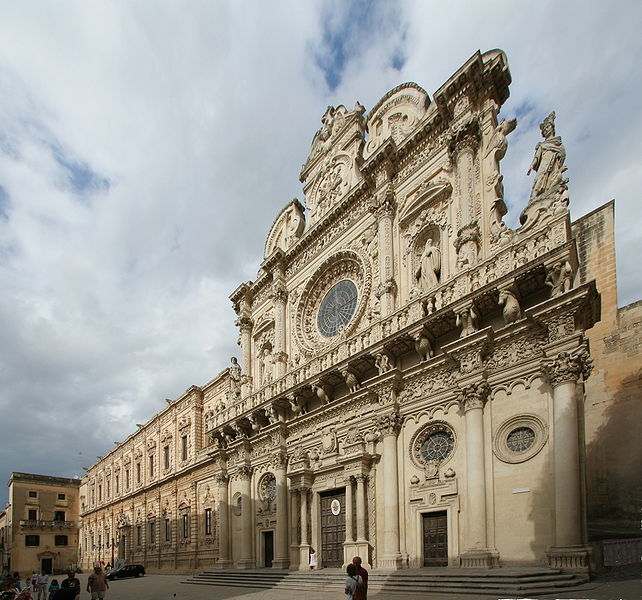 Italy 39
Italy 39
USA and Canada 1
UK 44
Using Cell Phones in Italy
Returning to the US
Customs,VAT & Duty Free
When you return to the U.S., you’ll need to declare everything you brought back that you did not take with you when you left. If you are traveling by air or sea, you may be asked to fill out a Customs Declaration Form provided by the airline or cruise ship. Keep your sales slips. Try to pack the things you’ll need to declare separately. Read the signs in the Customs area; they contain helpful information about how to clear Customs.
For complete information on Customs, look at the U.S. Government Customs Website
Value Added Tax (VAT) Refund Information
We have found it such a hassle to try to reclaim the VAT tax that we simply do not bother. If however, you will be spending a great deal of money, it might be worth the many steps you will need to go through. VAT (Value Added Tax) tax for hotels and restaurants can vary from 10% to 21%. Service is included. This VAT tax on services is not refundable.
Travelers to Italy from outside the EU are entitled to a reimbursement a minimum of 4% to a maximum of 20% V.A.T. (Value Added Tax) they pay on all purchases as long as the purchases add up to no less than 150 Euros in the same store and on the same day. The vendor must provide the purchaser with a duly filled out invoice which includes the price of each good, the V.A.T. paid for each item, as well as the identification (name and address) for both vendor and purchaser. The goods must be brought out of the European Union within three months from the date of purchase.
At the time of departure from Italy and final departure from the European Union territory, and before checking in your baggage, you must bring your invoice(s) and the merchandise purchased to the Italian Customs in order for them to process your V.A.T. refund claim (there is a specific booth for this purpose just prior to the entrance to the international area at the international port, gate or airport).
Some shops in major cities are now making it easier for non-EU tourists to get their refund by offering an instant fund right at the shop. But you will still have to go to Customs to get your refund form stamped.
Duty Free
If you are a U.S. or Canadian resident, you may qualify for a personal exemption which allows you to bring goods of a certain value into the country without paying customs duties, excise taxes, or Value Added Tax.
The source for some of this information is the CIA World Factbook.


Comments